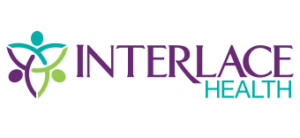Navigating the Complex Landscape of Missing Patient Belongings

Managing patients’ belongings is a time-consuming and costly task that can have a negative impact on the patient’s experience – and your bottom line. These challenges are exacerbated by the state of the patient as they come to the hospital, the number of times they are transferred while at the hospital and how discharge is handled. Without a process in place, it can quickly become a recipe for disaster.
Unraveling The Impact
Each year millions of dollars in insurance claims are filed on behalf of hospitals due to missing patient property. An article from the American Society of Health Care Risk Management (ASHRM) details some of the impacts.
“Although provision of care is the primary mission of most health care organizations, functions such as managing patient’s items are one of the many necessary tasks. Quantifying costs related to lost items is difficult, as often data is scarce or inconsistent. In addition to the financial implications losing possessions can diminish the patient experience.” The article goes on to say, “For the organization, there are many risks, including staff time spent managing, searching for and storing lost items; the potential cost of reimbursement or replacement; and reputational risk related to the loss of patient confidence.”
Many hospitals are finding that the increase in incidents of lost or stolen patient belongings is a result of staffing issues. Hospitals have seen a higher turnover of staff in support services roles than ever before. In 2023, the turnover rate for Patient Care Techs alone was 32.3% (NSI Report, 2023). If those positions are short-handed, many of these patient-related tasks fall on nurses, who are already overwhelmed and spread thin. A NCBI study on nurse time allocation shows that nurses spend less than 40% of their time with patients and have “expressed they were distracted and burdened by performing delegable and non-nursing activities to insufficient staffing or inattention by other departments”.
We spoke to Nathan D’Angona, Informaticist at Berkshire Health Systems and he discussed this strain on staff: “the biggest factor is really tied to the time spent trying to track items down, when it is often fruitless, which is really discouraging and mentally draining. And it falls on the shoulders of the busiest people, the nurses, who don’t have time to deal with it. The stress they feel over it is the biggest headache.”
Staffing and clinicians being overwhelmed are just the beginning of the mounting problems related to missing patient belongings. There is often confusion and lack of ownership for which department and role ultimately owns the responsibility of tracking patient belongings during their admission. “Several departments might have a hand in the process, including clinical departments; outpatient diagnostic and surgical departments; admitting/registration; security; and environmental services (EVS). There may be different methods for documentation, securing items, storage and the length of time items are retained. It is not uncommon for each department to have its own unique off-the-record procedure for management and storage of items, resulting in additional exposure” (ASHRM). Add multiple patient transfers into that already strained workflow, and it becomes impossible to keep track of patient belongings efficiently.
Tackling The Problem
How are health systems working to minimize these events from taking place? Yale New Haven works to limit the potential for loss by encouraging people not to bring valuable items with them when going to a planned visit to the hospital or doctor’s office. That approach makes sense, but if someone is planning an overnight visit, they will bring wallets, purses, and personal electronics to the hospital. Also, many hospital visits are unplanned and occur when a patient arrives through the Emergency Department.
Harborview Medical Center in Seattle had over 300 lost article incidents in a single year through their Emergency Department, causing them to spend thousands of dollars reimbursing for personal items. Some examples include a $3,000 ring, $1,000 dentures, $1,500-$2,000 hearing aids, necklaces, jackets, prosthetic devices, even one lost plane ticket. The organization took several steps to dramatically reduce the number of claims of lost belongings primarily stemming from people coming to the hospital via the emergency department.
By using sealed bags and a property tracking form, Harborview tracked all items whether they came with the patient at the time of admission or were added during their stay. The hospital has signature columns for both staff and the patient to acknowledge both additions and subtractions with their signatures. If a patient is not able to sign for any reason (incapacitated upon admission in the ED, for example) 2 staff signatures are required. As a result of the process, Harborview went from having over 300 incidents a year to only a handful of reimbursements per year.
A simple solution can often have a significant impact on your staff’s time, patient satisfaction, and your bottom line. Creating a form and a documentation process that is adopted across your organization is the first step. Interlace Health has worked with our hospital customers to implement a digital patient belongings process using our digital forms and electronic signature tools. Several clients have leveraged our Managed Forms Services to have the forms designed and managed by our team, while other systems have created their own forms using our Forms Designer product. Step two is to create and manage a streamlined workflow across all departments for collecting form signatures and documenting patient belongings. Interlace Health can help with that too. Many customers share that having a digital forms library that everyone can access, and a solution that can support patients and multiple staff signatures – all electronically – has been a game changer.
Putting People Over Paperwork
Interlace Health has been supporting hospitals with patient forms and critical staff workflows for over 30 years and our solutions can help with this mounting problem of missing patient belongings too. Interlace staff have created a 10-step workflow that can help document personal belongings throughout the inpatient stay, starting with admissions in the ER:
- Initial Patient Assessment: When a patient arrives at the Emergency Room (ER), the triage nurse performs an initial assessment and uses a tablet to log basic patient information into the Electronic Health Record (EHR).
- Belongings Documentation: The nurse uses the tablet to document the patient’s belongings at the bedside. This may include personal items like clothing, jewelry, and electronic devices. This includes capturing a picture of the personal items, if necessary.
- Integration with EHR: The belongings form is auto archived into the EHR system, ensuring that the information is securely stored and easily accessible by authorized healthcare professionals.
- Real-time Updates: As the patient’s belongings change or new items are added, the staff can update the information with a new form. These updates are reflected in real-time within the EHR, ensuring that all healthcare providers have access to the latest information.
- Secure Storage: Belongings information is stored securely in the EHR, following healthcare data privacy and security standards. Only authorized personnel, such as nurses and attending physicians, can access this information, and once a patient signs, the form cannot be edited.
- Transfer Report: During the patient transfer process, the nurse generates a transfer report using the tablet. This report includes essential patient information, medical history, and a section dedicated to belongings, which references the form. The form can quickly be viewed, making it easier for receiving staff to verify and track these belongings. If anything has changed, a new form can be created and signed at that time.
- Handoff Communication: The nurse communicates the transfer report, including belongings information, to the receiving team. This ensures continuity of care and helps the receiving team to be aware of any specific patient’s needs or belongings.
- Receiving Team Access: Upon the patient’s arrival at a different department or facility, the receiving team can access the patient’s belongings form directly from the EHR. This information aids in quickly identifying and managing the patient’s personal items.
- Discharge Process: When the patient is ready for discharge, the nurse can access the patient belongings form when items are returned to the patient.
- Final Documentation: An additional form can be generated during discharge to collect the patient and the staff member’s signature to document that all patient belongings were accounted for. This final belonging form is also stored in the patient’s EHR as part of their overall medical history, ensuring a comprehensive record for future reference.
By integrating the belongings tracking workflow into the EHR and utilizing digital forms at the bedside, healthcare providers can streamline the process, improve accuracy, and enhance communication during patient care transitions throughout the hospital.
The complexities of managing patients’ belongings underscore the urgent need for streamlined processes within healthcare institutions. The repercussions of overlooking this crucial aspect extend beyond financial strain, touching the very core of patient care and satisfaction. As patients navigate through various stages of their hospital journey, from admission to transfer and discharge, the potential for mishaps multiplies.
A well-defined and standardized protocol is not just a prudent investment; it is a safeguard against the chaos that can ensue without one. By addressing the root causes, such as staffing challenges and departmental confusion, hospitals can transform this potential disaster into an opportunity for improved efficiency, enhanced patient experience, and a more resilient bottom line.
If you are ready to take the next step and automate your patient belongings forms process with Interlace Health, Contact Us today.
About the Authors:
Art Nicholas, Chief Commercial Officer at Interlace Health

Art Nicholas, Chief Commercial Officer at Interlace Health, has over 20 years of experience in launching and expanding technologies in the healthcare field. He was a pioneer in getting speech recognition used by both doctors and nurses in inpatient and outpatient settings. In every role, his teams have successfully implemented automated workflows which benefit patients, providers and the healthcare ecosystem. A strong believer in the healthcare IT community, he has been an active member of CHIME, HIMSS, and MUSE, sitting on a number of their committees. He is committed to improving the quality of patient care and lowering the cost of care delivery through well-designed and well-supported technology workflow solutions. Connect with Art on LinkedIn.
Dessiree Paoli, Director of Product Marketing & Strategy at Interlace Health
 Dessiree Paoli is the Director of Product Marketing & Strategy at Interlace Health, a company that transforms workflows by providing clinicians and patients with digital healthcare solutions. She has more than 20 years of experience in driving strategic marketing initiatives, leading teams, and developing integrated campaigns, and she has worked in healthcare for more than 14 years. Connect with Dessiree on LinkedIn.
Dessiree Paoli is the Director of Product Marketing & Strategy at Interlace Health, a company that transforms workflows by providing clinicians and patients with digital healthcare solutions. She has more than 20 years of experience in driving strategic marketing initiatives, leading teams, and developing integrated campaigns, and she has worked in healthcare for more than 14 years. Connect with Dessiree on LinkedIn.
Download eBook: People Over Paperwork – How Healthcare Teams Can Leverage Digitized Forms





 Over the past five years,
Over the past five years, 

